History, culture, medieval villages, nature: there are many treasures to discover in Valle Camonica, in Northern Italy.
Known throughout the world for its rock carvings, declared a UNESCO heritage site in 1979, the Valley is also characterized by significant biodiversity, with over 55% of its territory made up of protected areas.
In addition to the most famous locations in its highest part, such as Ponte di Legno and Tonale, appreciated for a typical mountain holiday, the middle and lower part of Valle Camonica holds many surprises. Spas, artistic masterpieces, panoramic walks and cycle paths, fine wines and giant benches, extraordinary pictorial cycles and experiences for families.
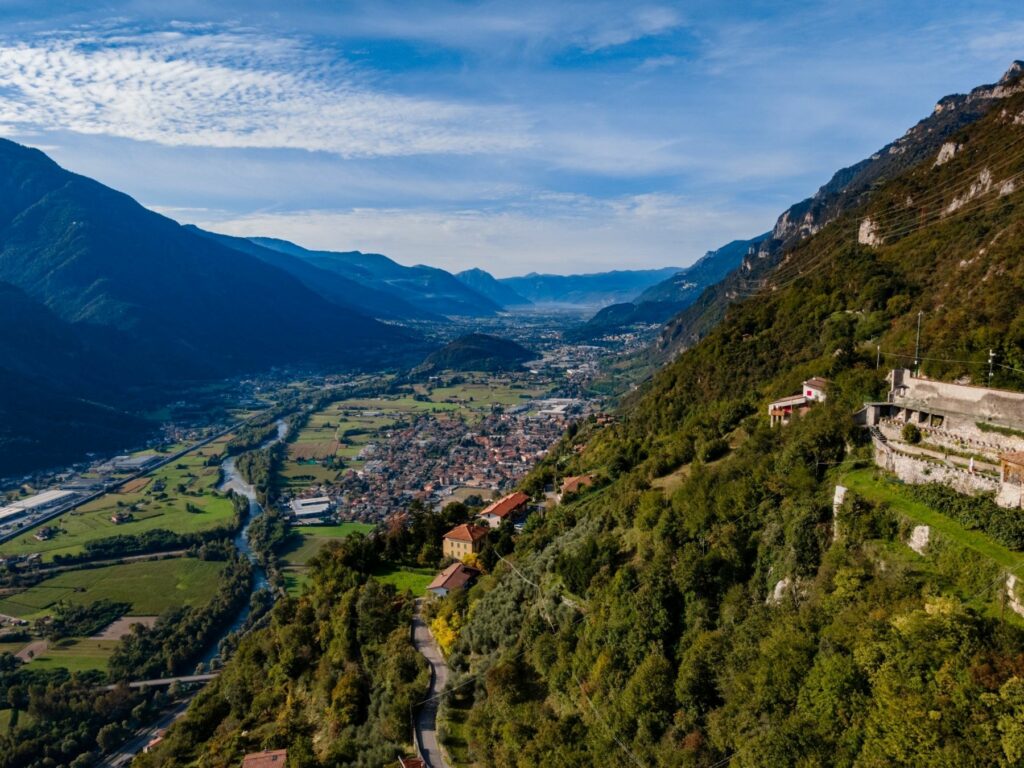
The “Valle dei Segni”
The rock art of Valle Camonica, in the province of Brescia, is an extraordinary open-air gallery. Over
200,000 catalogued engravings constitute an incredible work of art, among the largest concentrations of rock carvings in the world. Here you can read the history of a people, the Camunian people, who could represent the history of European civilization.
From the shores of Lake Iseo to Ponte di Legno, in 180 sites distributed among 24 Municipalities, the “Valle dei Segni” spans twelve thousand years of history. It goes from the end of the Upper Paleolithic (between 13,000 and 10,000 years ago) to the Iron Age (1st millennium BC).
This is a unique journey into European prehistory and protohistory to reach, through the engravings of the historical age (Roman, medieval and modern) up to the threshold of the twentieth century.
Hunting and daily life scenes, sacred rites and enigmatic symbols (including the Camunian Rose, today the symbol of the Lombardy region) and thousands of other depictions are engraved on the rocks.
In the 8 dedicated archaeological parks it is possible to immerse yourself in the fantastic and complex language engraved on boulders of various shapes and sizes. Among these, some reach 50 meters and collect up to 100 figures. The greatest concentration is in the Capo di Ponte area, where the visit cannot but begin from the Naquane National Park. Here, over 30 thousand figures are engraved on 104 rocks. With the largest grouping discovered in the world, it was the first Italian archaeological park, established
in 1955.
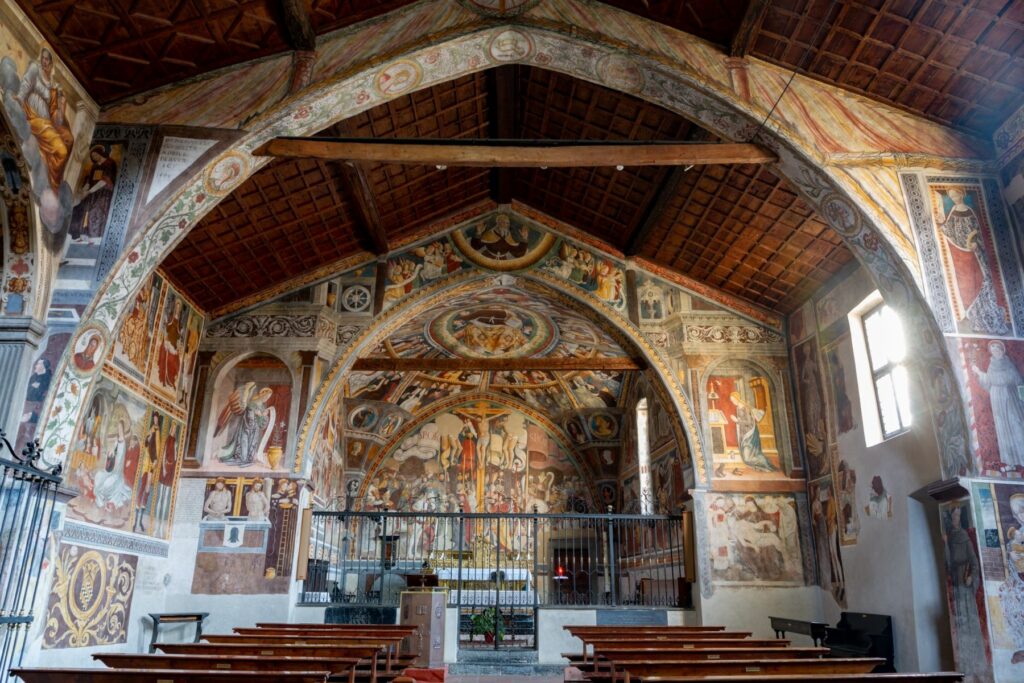
In front of this area, there are the Massi di Cemmo and, not far away, the municipal archaeological park of Seradina and Bedolina.
Other engravings can be admired in the parks of Lake Moro, Luine and Monticolo in Darfo Boario Terme, in Ossimo, Ceto, Cimbergo and Paspardo, in Sellero, Sonico. Many other finds are found at the National Museum of Prehistory of Valle Camonica, in Capo di Ponte.
Archaeology among the mountains
In Valle Camonica there are also traces of the Roman period. The most significant can be admired in the Archaeological Park of Cividate Camuno. The ancient Civitas Cammunorum, the main center in Roman times) extends for about 20,000 square meters.
Here the theater and the amphitheater are set in an extraordinary naturalistic context with green areas rich in plants and trees. The finds that tell the story of the fusion between Roman civilization and ancient Camunian traditions are collected in the nearby National Archaeological Museum of Valle Camonica. Among the testimonies from all over the Valley, you can admire a very rare statue, in precious Greek marble, of Minerva.
The goddess of wisdom and war, had been found in the central hall of the sanctuary dedicated to her in Breno. At the foot of a cliff crossed by caves and tunnels dug by water, the Sanctuary of Minerva is located in a site of great landscape charm, which for about 2,500 years was a sacred place, a point of convergence and cultural reference of the territory.
Frescoes and castles
Extraordinary cycles of frescoes decorate the churches of Camonica Valley and can be the common thread of itineraries to discover artistic masterpieces that are still little known. For example, the route in the footsteps of Giovanni Pietro da Cemmo, a master of the Lombard Renaissance active in the late fifteenth century, leads to the discovery of the testimonies left in numerous churches in the Camonica Valley. In the Gothic-style Sanctuary of the Annunciation of Piancogno, he frescoed scenes from the life of Christ and Mary, while in the Church of Santa Maria Assunta in Esine – his absolute masterpiece – you can admire cycles that narrate the devotion to the Wonderworker Saints and the life of Mary, painted with exceptional formal refinement.
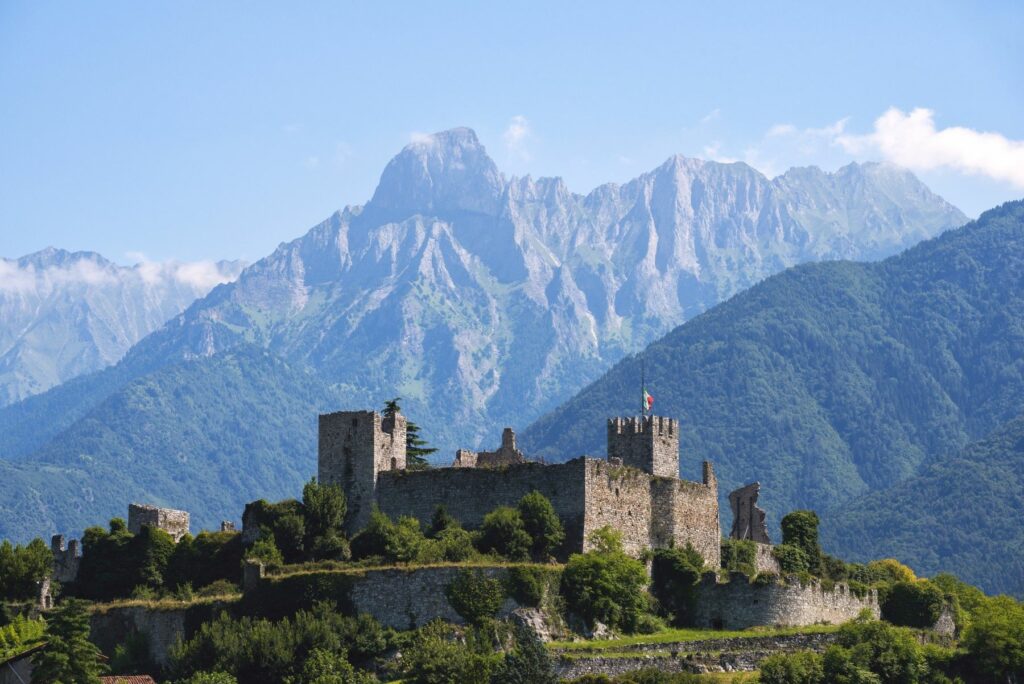
In Bienno, in the Church of Santa Maria Annunciata, his works, dedicated to the life of Saint Francis and the Sibyls, enter into dialogue with those of another exceptional artist, Romanino. This great painter of the Brescian School of the Renaissance frescoed the presbytery with a cycle dedicated to the Annunciation. He also worked in Valle Camonica, where he frescoed the presbytery of the Church of S. Antonio in Breno, declared a National Monument.
From Valle Camonica it is worth going as far as Pisogne, on the shores of Lake Iseo. Here you can admire the great cycle of frescoes on the theme of the Passion that decorate the sanctuary of Santa Maria della Neve, in one of the highest points of his poetics.
Created between 1532 and 1534, the frescoes covering the walls and ceiling of the church with an evocative narrative, tell the stories of the Passion of Christ and, on the vaults, depict the Prophets and the Sibyls.
Breno Castle
The Castle in Breno takes you back into the Middle Ages. It can be reached with a short walk from the city center and offers a spectacular view of the mountains from above. Built as a set of towers and palaces in the period of Frederick I Barbarossa (1100 – 1200) and converted into a military stronghold under the Republic of Venice (1400 – 1500), the castle also reveals prehistoric traces dating back to the 8th century BC. Every visit becomes a fascinating journey through different eras, from the crenellated walls to the stately tower house up to the 20-meter high tower, open to visitors. Its large green spaces are ideal for
walking and relaxing.
The Sanctuary of the Via Crucis in Cerveno
Another unique artistic masterpiece is the Sanctuary of the Via Crucis, next to the parish church of the small village of Cerveno.
The Sanctuary (“le Capèle”, in the local dialect) is part of the Lombard-Piedmontese tradition of the Sacri Monti. The 14 chapels of the Via Crucis are arranged along a stepped corridor that culminates at the top with the chapel of the Deposition. Frescoed, with 198 life-size wooden and stucco statues of vivid popular
realism, they narrate the stages of the Passion of Christ. It took over a century to complete the work, from the mid-1700s to the mid-1800s.
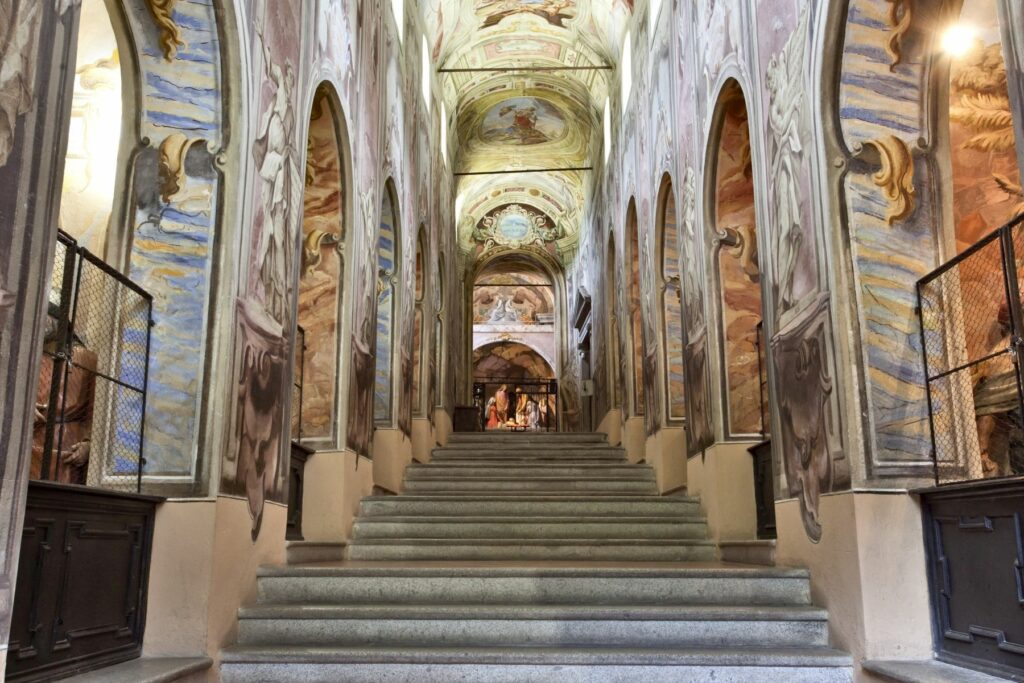
Most of the statues were created by the Camuno sculptor Beniamino Simoni starting in 1752. The statues of the VIII, IX and perhaps X station are instead due to Donato and Grazioso Fantoni, who replaced Simoni. In 1869, Giovanni Selleroni from Milan completed the last station, the XIV, effectively closing more than a century of work.
The Via Crucis has recently been restored to its original splendor by a careful restoration and can now be admired in all its extraordinary pathos and beauty.
Bienno, a village of artists and ancient forges
Crenellated towers and ancient houses with loggias and stone portals: Bienno, among the Most Beautiful Villages in Italy, preserves its medieval appearance intact, to be discovered by walking slowly through the
alleys and squares.
In the heart of the village unexpected masterpieces of art are hidden, such as the valuable frescoes by Romanino and da Cemmo in the church of Santa Maria Annunciata, and the organ made in the 17th century by the Antegnati brothers in the parish church. But the real curiosity of the town are the ancient forges, where even today it is possible to see how iron was once worked, with 17th century hammers moved only by the force of the water.
Once upon a time, in the whole valley, there were about eighty workshops that produced “ferrazze”, as the locals call them: heirs of this tradition, whose stages can be retraced in the Ethnographic Museum of Iron, the blacksmiths of Bienno still use the same working
techniques as over three centuries ago.
Ancient techniques can also be discovered at the old mill, where it is possible to see the large millstones in action that transform cereals into flour. In homage to this artisan tradition, for over 30 years Bienno, has been transformed in the last week of August into a lively crossroads of creativity on the occasion of the Mostra Mercato, which has now become a cultural event of international importance, with over 200 artists and artisans who exhibit their works. Its historic center comes alive with artistic installations, workshops, exhibitions, shows.
The charm of Lake Moro
Valle Camonica is full of mountain lakes, small blue gems nestled in the middle of green landscapes. Among these, Lake Moro is a small body of water at 381 m above sea level, between the municipalities of Darfo Boario Terme and Angolo Terme. It is the ideal destination for a regenerating dip, a ride on a pedal boat or rowing boat or for a walk along the paths that surround it, immersed in lush nature.
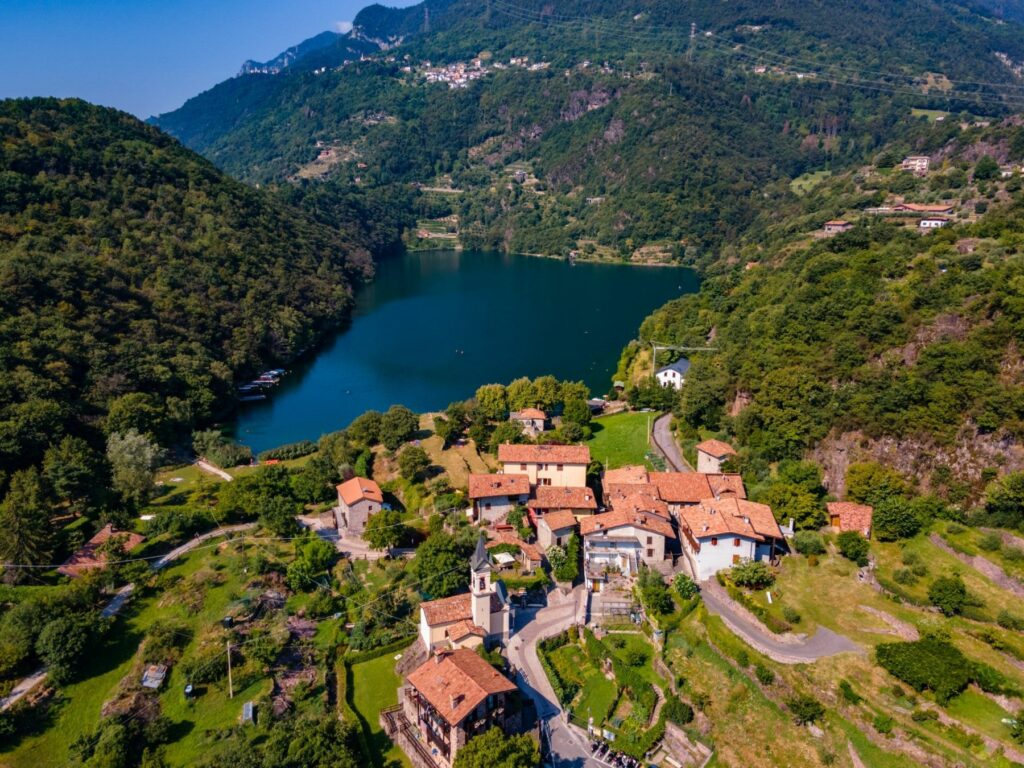
From a naturalistic point of view, the proximity to the Mediterranean climate of Lake Iseo and the glacial climate of Adamello make Lake Moro the area with the highest concentration of biodiversity in Europe. A favorable condition that is also reflected in the production of local cheeses, honey, and oil.
During the months of greatest tourist flow, a shuttle service is active with departure and arrival from the locality of Corna di Darfo.
Spas and Walks
In Valle Camonica is the spa town of Darfo Boario Terme, whose spas exploit the beneficial effects of the bicarbonate-sulphate-calcium waters of the 4 sources, coming from Mount Altissimo. The large thermal park, of over 130,000 square meters, allows guests to immerse themselves in greenery and nature.
For those who love walking, the Valley also offers two extraordinary landscape, historical and cultural routes, the Valeriana Way and the Path of Carlo Magno. They can be done in part, or in their entirety over several days.
The Valeriana Way
The Valeriana Way is an ancient route that goes from Pilzone on Lake Iseo to Edolo. It forks to continue on one side to Aprica and from there to Tirano in Valtellina, on the other to the Tonale Pass. 190 km long and divided into 12 stages, it retraces the ancient road that, it is said, was built by the Roman general
Gaius Publius Licinius Valerianus to be able to move troops from Italy to the Rhine and Danube basins as quickly as possible. Among the jewels of the Camunian area of the itinerary, the Sanctuary of the Via Crucis of Cerveno and the Convent of the Annunciation of Piancogno, with frescoes by Giovanni Pietro da Cemmo.
The Path of Charlemagne
The Path of Charlemagne starts from Bergamo and reaches Carisolo, in Trentino Alto Adige.
This itinerary follows ancient paths following in the footsteps of Charlemagne, who legend has it passed through Valle Camonica. It extends for about 225 km and is divided into 12 stages.
In the Camuno section it offers very suggestive landscapes and touches important churches, villages and historical sites. Among the unmissable points, Lake Moro, a small jewel set between the mountains we have already talked about, the Rock Engraving Park of Foppe di Nadro and that of Naquane in Capo di Ponte.
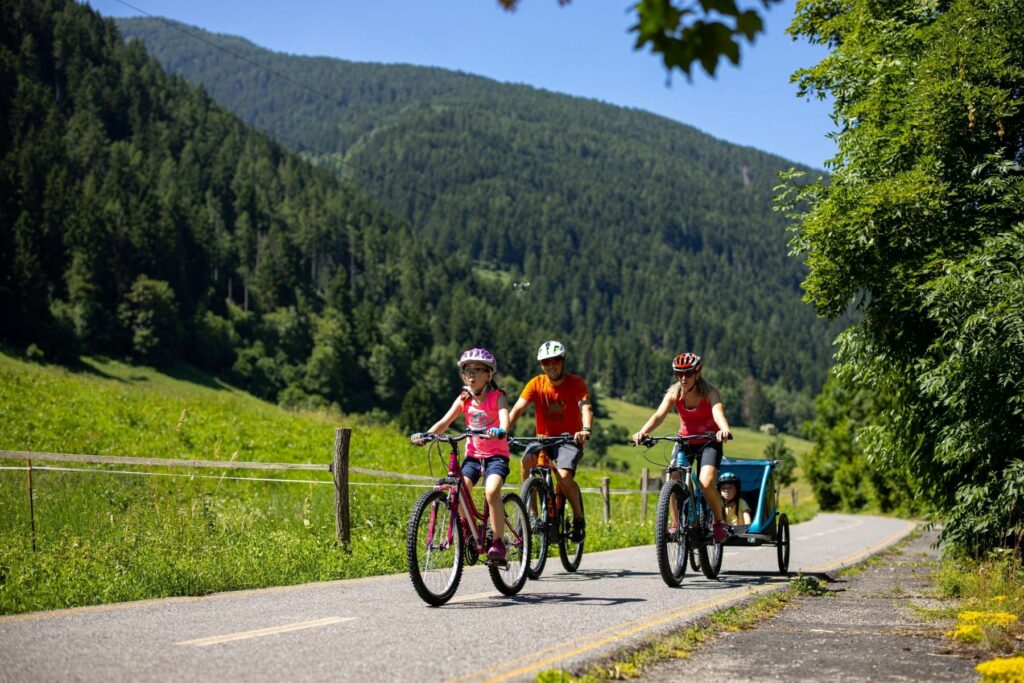
The Oglio River Cycle Route
The lower-medium Camonica Valley offers cycling enthusiasts routes of all types and of all kinds of difficulty. Oglio River Cycle Route was elected the most beautiful cycle path in Italy at the Italian Green Road Awards 2019, the Italian Oscars of cycling tourism. It extends for 90 km from the Tonale Pass to Lake Iseo.
The route winds through panoramic views and ancient villages along the so-called Camuno
Cycle Route, which from Capo di Ponte, alternating natural and urban landscapes, continues on its own path for over 40 km. It meets the centers of Breno, Darfo Boario Terme, Pisogne and then reaches the eastern shore of Lake Iseo.
Giant benches and breathtaking views
Designed by the American designer Chris Bangle, the Big Benches are also found in Valle Camonica. There are 10 of them, located in particularly panoramic points in Darfo Boario Terme, Capo di Ponte, Breno,
Lozio, Paspardo, Borno, Sellero, Sonico, Edolo, Incudine.
These colorful oversized benches pay homage to the most beautiful peaks that embrace the valley. Pizzo Camino and Concarena are visible from the giant bench in Borno, while the Seradina-Bedolina Municipal Archaeological Park is near the Capo di Ponte bench.
The first Big Bench located in the valley is in Paspardo, with a view of the Cimbergo castle and Concarena, while the one in Darfo Boario Terme offers a view all the way to Lake Iseo.
Fine wines and heroic vineyards
Vineyards located at high altitudes, on steep terrain or terraces, such as those that outline the slopes of the middle and upper Camonica Valley, from which fine wines with Typical Geographical Indication come, are called “heroic”. In recent years, there has been a recovery of viticulture in this area, where it had been
partly abandoned, and the landscape is slowly and pleasantly changing.
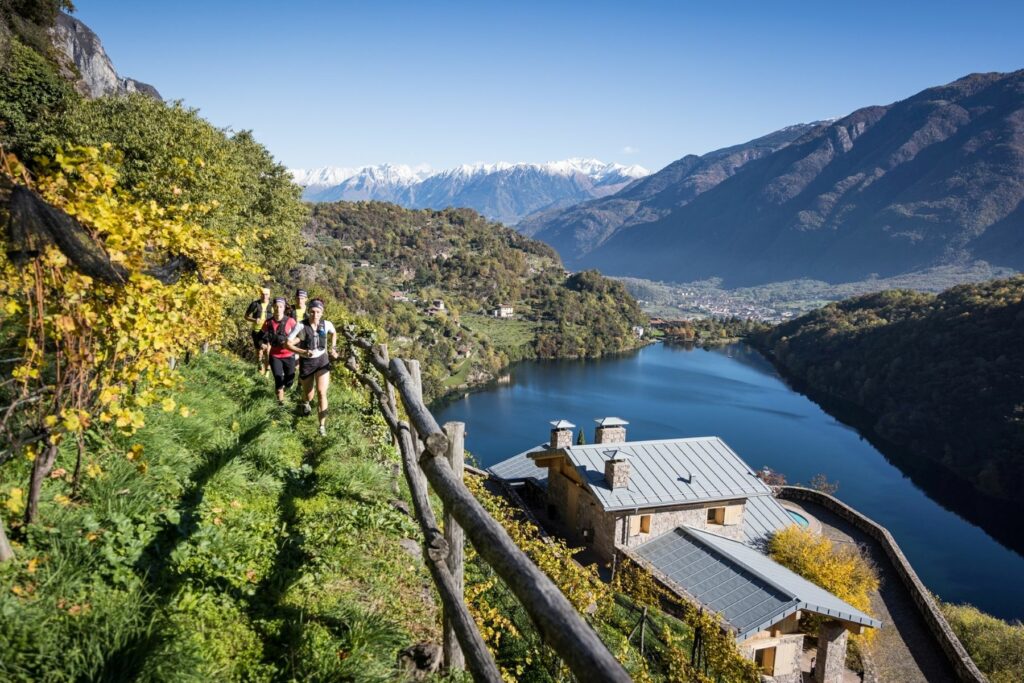
The Consortium of Valle Camonica Wines offers itineraries to do by bike or on foot, among ancient paths, terraced vineyards, villages and cellars where you can stop for visits and tastings.
For example, the route “Between vineyards and wines” crosses the vineyards and cellars of the Concarena alluvial fan, touching the “Casa museo” di Cerveno.
The route “Between vineyards and olive trees” winds through the municipalities of Piamborno and Darfo
Boario Terme. It offers enchanting views of Lake Iseo and Lake Moro, with stops at sites of historical and cultural importance such as the Santuario dell’Annunciata di Piamborno.
A special opportunity to learn about wines and the territory is, every autumn, the “Valle dei Segni Wine Trail”, a race to discover the “Segni” among history, art, territory, vineyards.
All the information on VisitBrescia
Photocourtesy: VisitBrescia and Agorà

